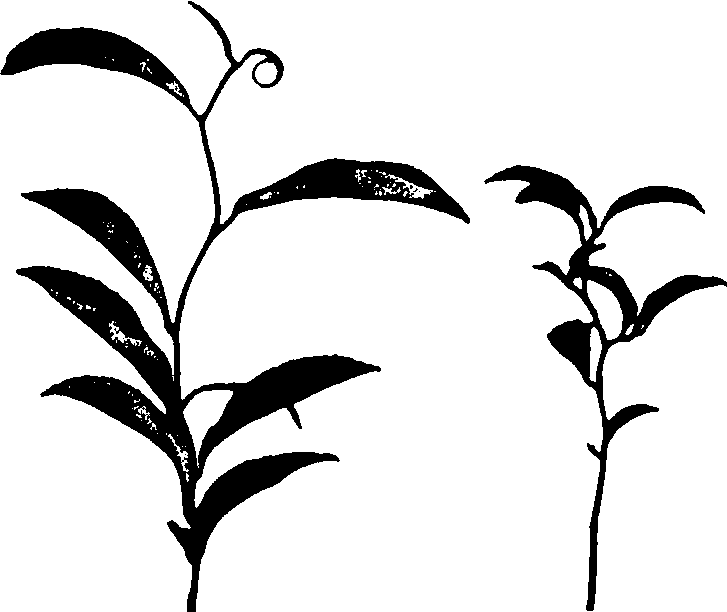奇曲种Qiqu zhong
茶树无性系品种之一,以茎枝弯曲有序,奇特多姿而得名。1958年福建省农业科学院茶叶研究所在飞层山北坡园壁上发现一个突变枝, 当年10月剪枝进行繁殖。该品种是继佛手、筲绮种后被发现保留的又一独特变异类型。国内一些科研单位有少量种植。灌木型, 分枝较密,枝条细软如藤,呈规律的“S”形, 整个植株弯曲多姿, 盘旋若龙。越冬芽春分前后萌发, 清明前后采摘, 育芽能力较强。开花、结实率尚高, 为保持种性, 多为扦插繁殖。如供园林庭院观赏, 则可丛植或盆栽, 并配合人工整枝,树型千姿百态, 别有风趣。
1966年湖南省涟源县茶场从本地群体品种中, 又发现一株茎枝弯曲有序的茶树, 通过无性扦插繁殖,后被命名为涟源奇曲。

奇曲种
左: 母株 右: 实生后代